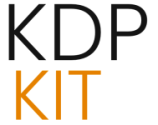Choosing the Best KDP Print-on-Demand Service: A Comprehensive Tutorial

For authors navigating the self-publishing landscape, selecting the right print-on-demand (POD) service is a crucial decision that impacts book quality, distribution, and ultimately, profitability. Amazon Kindle Direct Publishing (KDP) is a dominant player in this space, offering a streamlined process for bringing physical books to market without the need for large upfront print runs or inventory management. This tutorial will guide you through the essential factors to consider when choosing a KDP print-on-demand service, ensuring you make an informed choice that aligns with your publishing goals.
Understanding Print-on-Demand
Print-on-demand is a publishing model where books are printed only when an order is placed. This eliminates the need for authors to invest in large quantities of books, store inventory, or handle shipping themselves. When a customer orders a book, the POD service prints a copy and ships it directly to the buyer. The author then receives royalties after the printing and distribution costs are deducted.
This method offers significant advantages for self-published authors, including:
- Reduced Financial Risk: No need for large upfront investments in printing.
- No Inventory Management: Eliminates the hassle of storing and tracking physical book stock.
- Global Reach: Books can be made available to a worldwide audience through online retailers.
- Flexibility: Allows for easy updates and corrections to manuscripts.
Key Factors to Consider When Choosing a KDP Print-on-Demand Service
While Amazon KDP is a popular choice, understanding its nuances and comparing it with other factors will help you make the best decision for your book.
1. Print Quality and Options
The physical appearance of your book is paramount. KDP offers various print options, but quality can sometimes vary across its production facilities. As of August 2025, KDP provides both paperback and hardcover options.
Paperback Options:
- Ink: Black ink is standard for most books, while premium color and standard color options are available for paperbacks. Color printing generally incurs higher costs.
- Paper Type: KDP offers white and cream paper options. Paper type does not affect printing costs.
- Trim Sizes: KDP offers a range of trim sizes, with the common US size being 6″ x 9″. Custom trim sizes are also possible for paperbacks within specific dimensions.
- Cover Finish: Covers can have a glossy or matte finish. Glossy finishes are shiny and make artwork striking, while matte finishes offer a subtle, polished look.
Hardcover Options:
KDP introduced hardcover options, expanding its offerings for authors seeking a more premium feel.
- Ink: Hardcovers primarily use black ink, with premium color options available. Standard color ink is not offered for hardcovers.
- Trim Sizes: Hardcovers have a more limited selection of trim sizes compared to paperbacks.
- Page Count: Hardcovers have a minimum page count of 75 and a maximum of 550 pages.
- Dust Jackets: KDP does not currently offer dust jackets for hardcover books.
Note on Print Quality: While KDP’s print quality is generally considered good, some authors have reported variability, particularly with color reproduction in illustrated books. For critical color accuracy, comparing proofs from different services like IngramSpark might be beneficial.
2. Cost of Printing
The cost of printing is a significant factor, as it directly impacts your royalties. KDP’s printing costs are calculated based on a fixed cost plus a per-page cost, which varies by marketplace, trim size, and ink type.
- Base Costs: KDP printing costs are competitive, with paperback printing starting from approximately $2.30 USD and hardcover from $6.80 USD.
- Color vs. Black & White: Books with color printing are more expensive than those with black ink.
- Page Count: Longer books naturally incur higher printing costs due to the per-page fee.
- No Upfront Fees: KDP does not charge upfront fees for uploading or publishing.
Important Update: As of June 10, 2025, KDP has adjusted its royalty rates for print books priced below $9.99 USD, reducing them from 60% to 50%. Color printing costs for paperbacks have also been reduced in some marketplaces.
3. Royalties and Pricing
Understanding royalty structures is vital for maximizing your earnings.
- Standard Distribution (Amazon Sales): For books sold directly on Amazon, authors typically earn up to 60% of the list price, minus printing costs.
- Expanded Distribution: If you opt for KDP’s Expanded Distribution, which makes your book available to other retailers and libraries, the royalty rate is reduced to 40% of the list price, minus printing costs. This is because third-party retailers take a larger share.
- Minimum List Price: KDP enforces a minimum list price for print books, calculated based on printing costs and royalty rates, to ensure authors do not sell books at a loss.
Note on Expanded Distribution: While it offers wider reach, some authors have found KDP’s Expanded Distribution to be less effective for actual sales in bookstores, with some retailers even refusing to stock KDP books due to return policies. For broader distribution, IngramSpark is often considered a more robust option.
4. Distribution Channels
Where your book is available for purchase is a key consideration.
- Amazon Marketplace: KDP’s primary strength is its direct integration with Amazon’s vast customer base, ensuring your book is readily available on the world’s largest online bookstore.
- KDP Expanded Distribution: This option makes your paperback available to distributors that supply other online retailers and libraries. However, it’s important to note that availability does not guarantee sales, and the royalty rate is lower.
- IngramSpark: For authors seeking wider distribution beyond Amazon, IngramSpark offers access to over 40,000 retailers and libraries globally. This makes it a strong contender if your goal is to reach bookstores and other non-Amazon channels.
Combined Strategy: Some authors utilize both KDP for Amazon sales and IngramSpark for broader distribution, uploading their trade paperback to both platforms. To do this, you must opt out of KDP’s Expanded Distribution.
5. Ease of Use and User Interface
A user-friendly platform can significantly streamline the publishing process.
- KDP: KDP is widely regarded as user-friendly, especially for beginners. The process of uploading manuscripts and covers is generally straightforward, and books can appear on Amazon within 72 hours.
- IngramSpark: While powerful, IngramSpark’s interface can have a steeper learning curve for beginners, with some finding its pricing breakdown and research aspects less intuitive.
6. Customer Service
Reliable customer support is crucial when issues arise.
- KDP: Customer service experiences with KDP can be mixed. Some authors report efficient support, while others find it difficult to resolve issues, with cases being passed between departments or closed without resolution.
- IngramSpark: Customer service for IngramSpark also receives varied feedback, with some authors experiencing significant challenges.
It is advisable to explore customer support options and reviews for any platform you consider.
7. Author Royalties and Earnings
Maximizing your earnings is a primary goal for most self-published authors.
- KDP Amazon Sales: KDP generally offers competitive royalties for sales made directly on Amazon, often resulting in higher earnings per book compared to other channels when priced appropriately.
- Expanded Distribution Royalties: As mentioned, the 40% royalty rate for expanded distribution is significantly lower than direct Amazon sales.
- IngramSpark Royalties: IngramSpark offers flexible royalty rates, typically between 45% and 60%, minus printing costs, and is often preferred for wider distribution despite potentially slightly higher base printing costs.
Comparing KDP with Other Leading POD Services
While KDP is a strong contender, it’s beneficial to compare it with other popular services:
- IngramSpark: Excels in distribution, providing access to a vast network of retailers and libraries worldwide. It offers more customization in print options, including hardcover with dust jackets, and generally better print quality for color-intensive books. However, it may have a steeper learning curve and potential setup fees (though promo codes can often waive these).
- Lulu: Known for its flexibility and author-friendly approach, Lulu supports various book formats and integrates with platforms like Shopify for direct sales. Its distribution can be slower than KDP.
- Bookbaby: A good option for authors with an established platform and budget, Bookbaby offers comprehensive services but may have higher costs and minimum order quantities for print-to-order.
- Bookvault: Offers flexible POD solutions with access to a global retail network and direct sales integrations. It emphasizes low costs and eco-friendly practices.
Making Your Decision: A Strategic Approach
Choosing the best KDP print-on-demand service, or deciding whether KDP is the right fit for your entire print strategy, involves weighing your priorities:
- For Amazon-Centric Sales: If your primary goal is to sell books directly on Amazon and you value ease of use and fast turnaround, KDP is an excellent choice.
- For Broader Distribution: If reaching bookstores, libraries, and a wider range of online retailers is critical, consider using IngramSpark, either as your primary POD service or in conjunction with KDP.
- For High-Quality Visual Books: For books with complex color illustrations or a need for premium finishes, carefully compare print proofs from KDP and IngramSpark, as quality can vary.
- For Beginners: KDP’s user-friendly interface makes it a strong starting point for new self-published authors.
Final Recommendation: Many authors find success by using KDP for its direct Amazon sales channel and leveraging IngramSpark for expanded distribution. This hybrid approach allows authors to capitalize on Amazon’s massive audience while also ensuring their books are available through a wider network of booksellers and libraries.
By carefully considering these factors and understanding the strengths and weaknesses of each service, you can confidently choose the print-on-demand solution that best supports your author journey and helps your books reach their intended readers.









